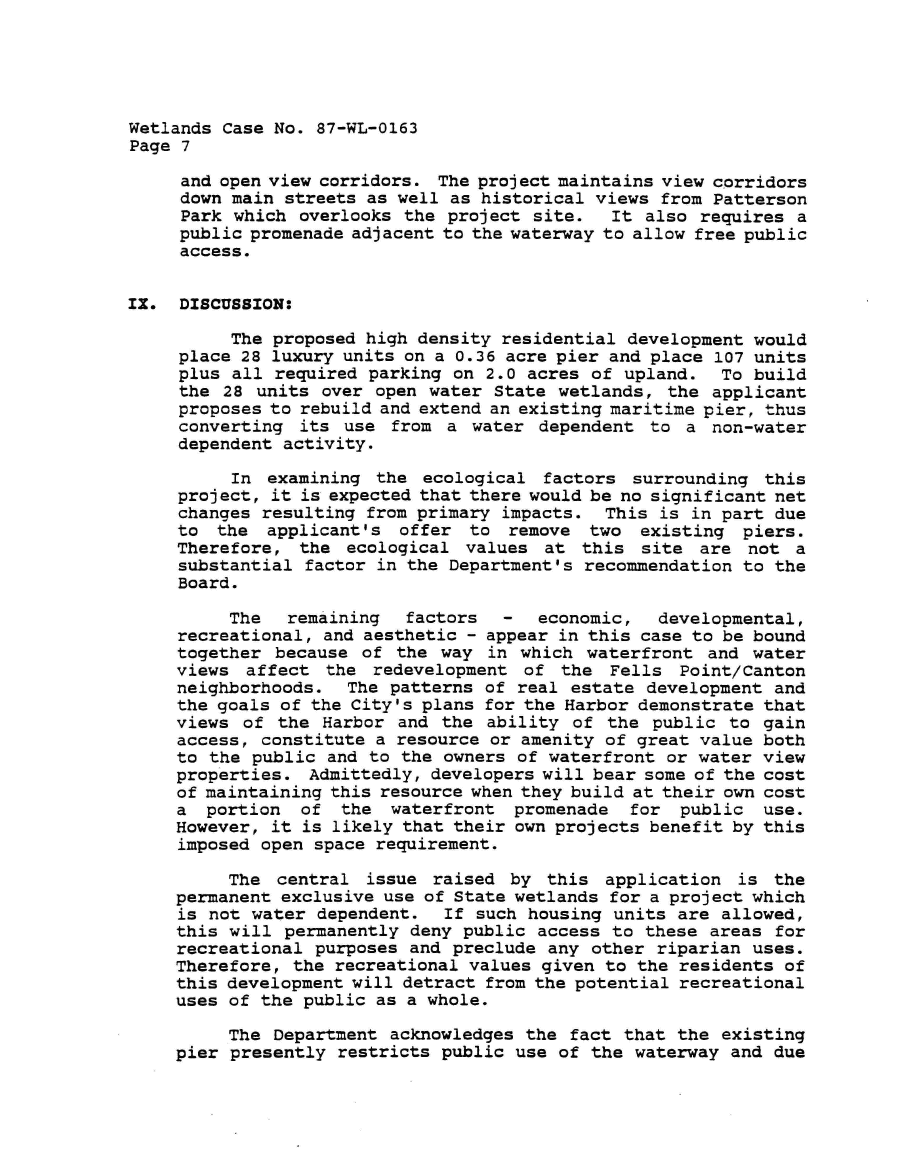|
Wetlands Case No. 87-WL-0163
Page 7
and open view corridors. The project maintains view corridors
down main streets as well as historical views from Patterson
Park which overlooks the project site. It also requires a
public promenade adjacent to the waterway to allow free public
access.
DISCUSSION:
The proposed high density residential development would
place 28 luxury units on a 0.36 acre pier and place 107 units
plus all required parking on 2.0 acres of upland. To build
the 28 units over open water State wetlands, the applicant
proposes to rebuild and extend an existing maritime pier, thus
converting its use from a water dependent to a non-water
dependent activity.
In examining the ecological factors surrounding this
project, it is expected that there would be no significant net
changes resulting from primary impacts. This is in part due
to the applicant's offer to remove two existing piers.
Therefore, the ecological values at this site are not a
substantial factor in the Department's recommendation to the
Board.
The remaining factors - economic, developmental,
recreational, and aesthetic - appear in this case to be bound
together because of the way in which waterfront and water
views affect the redevelopment of the Fells Point/Canton
neighborhoods. The patterns of real estate development and
the goals of the City's plans for the Harbor demonstrate that
views of the Harbor and the ability of the public to gain
access, constitute a resource or amenity of great value both
to the public and to the owners of waterfront or water view
properties. Admittedly, developers will bear some of the cost
of maintaining this resource when they build at their own cost
a portion of the waterfront promenade for public use.
However, it is likely that their own projects benefit by this
imposed open space requirement.
The central issue raised by this application is the
permanent exclusive use of State wetlands for a project which
is not water dependent. If such housing units are allowed,
this will permanently deny public access to these areas for
recreational purposes and preclude any other riparian uses.
Therefore, the recreational values given to the residents of
this development will detract from the potential recreational
uses of the public as a whole.
The Department acknowledges the fact that the existing
pier presently restricts public use of the waterway and due
|

